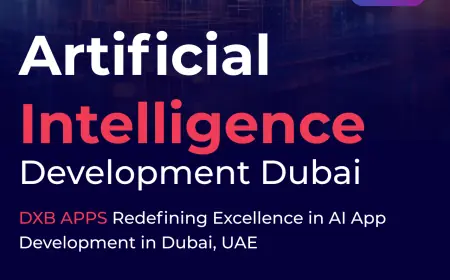Artificial intelligence is redefining how digital experiences are crafted, making user interfaces smarter, more intuitive, and highly personalized. As we move deeper into 2025, AI-powered tools are becoming essential for frontend developers, transforming every stage of the design and development process. This comprehensive guide explores how these tools enhance UI/UX, streamline workflows, and deliver tangible benefits for businesses and users alike.
What is the Role of AI in Modern Frontend Workflows?
AI is now a core component of front end development, automating repetitive tasks and enabling developers to focus on creativity and strategy. By integrating AI into design and development platforms, teams can:
- Instantly generate code from design mockups.
- Automate testing and debugging.
- Personalize user experiences in real time.
- Optimize performance based on live user data.
How to Use AI for Faster Prototyping and Design Generation
AI-powered design tools like Uizard and Figma’s smart features allow developers to turn text descriptions or sketches into interactive prototypes within minutes. Here’s how it works:
- Enter a simple prompt, such as “a login page with a blue theme.”
- The AI generates an editable UI mockup that can be refined and exported to code.
This rapid prototyping dramatically reduces the time from concept to implementation, letting teams validate ideas and iterate faster.
Can we Automate Code Generation and Testing with AI?
Yes, AI-driven IDEs like GitHub Copilot, Tabnine, and CodeWhisperer are revolutionizing coding by:
- Suggesting code snippets and completing functions based on context.
- Automatically generating reusable components from wireframes or requirements.
- Identifying bugs and recommending fixes in real time.
For testing, AI can create and run test cases, spot UI inconsistencies, and even simulate user interactions, ensuring robust and reliable applications without the manual overhead.
Best Way to Personalize UI/UX with AI
Personalization is a major advantage of AI in UI/UX design. AI algorithms analyze user behavior, preferences, and interactions to:
- Tailor content, layouts, and recommendations for each visitor.
- Adjust interfaces dynamically based on device, location, and time of day.
- Provide targeted notifications and suggestions that boost engagement and satisfaction.
Major platforms like Netflix and Amazon already use AI to deliver highly personalized experiences, setting a new standard for user-centric design.
How to Enhance Accessibility and Inclusivity Using AI?
AI is making digital products more accessible by:
- Automatically checking for accessibility compliance (e.g., color contrast, alt text).
- Powering screen readers, voice assistants, and real-time language translation.
- Adapting interfaces for users with disabilities, such as adjusting font sizes or enabling speech controls.
These features help developers meet global accessibility standards and create inclusive experiences for all users.
What is the Impact of AI on Developer-Designer Collaboration?
AI is bridging the gap between designers and developers by:
- Translating Figma or Sketch designs directly into production-ready code.
- Suggesting design improvements, animations, and layout optimizations.
- Enabling real-time A/B testing to validate design choices and maximize user engagement.
This shift means teams spend less time on manual handoffs and more on strategic decision-making and innovation.
How to Optimize Performance with AI-Driven Tools?
Performance optimization is often tedious, but AI automates many critical tasks:
- Managing image sizes, lazy loading, and caching based on actual usage patterns.
- Monitoring user interactions to identify bottlenecks and recommend improvements.
- Ensuring that applications remain fast, responsive, and scalable as traffic grows.
AI-powered analytics also provide actionable insights, helping teams make data-driven decisions that align with business goals.
Can AI Reduce Costs and Improve Scalability?
Absolutely. By automating labor-intensive processes like testing, content creation, and customer support, AI lowers development and operational costs. AI-enabled cloud solutions help scale resources on demand, ensuring websites remain reliable and efficient, even during peak periods.
Unique Data and Expert Insights
- Recent studies show that 72% of businesses leveraging AI in web development report faster project delivery and higher user satisfaction.
- In the USA, companies adopting AI-powered frontend tools are seeing up to 30% cost savings and improved customer retention rates.
Final Thoughts
AI-powered tools are transforming UI/UX design for frontend developers, making digital products smarter, faster, and more user-centric. From rapid prototyping and automated testing to real-time personalization and accessibility, AI is not just a trend—it’s a necessity for modern web development.
By embracing these tools, developers and businesses can deliver exceptional experiences that meet the evolving expectations of users in the USA and beyond. If you’re looking to stay ahead in the competitive landscape of front end development, integrating AI into your workflow is the best way to future-proof your digital products.

 Like
0
Like
0
 Dislike
0
Dislike
0
 Love
0
Love
0
 Funny
0
Funny
0
 Angry
0
Angry
0
 Sad
0
Sad
0
 Wow
0
Wow
0















































